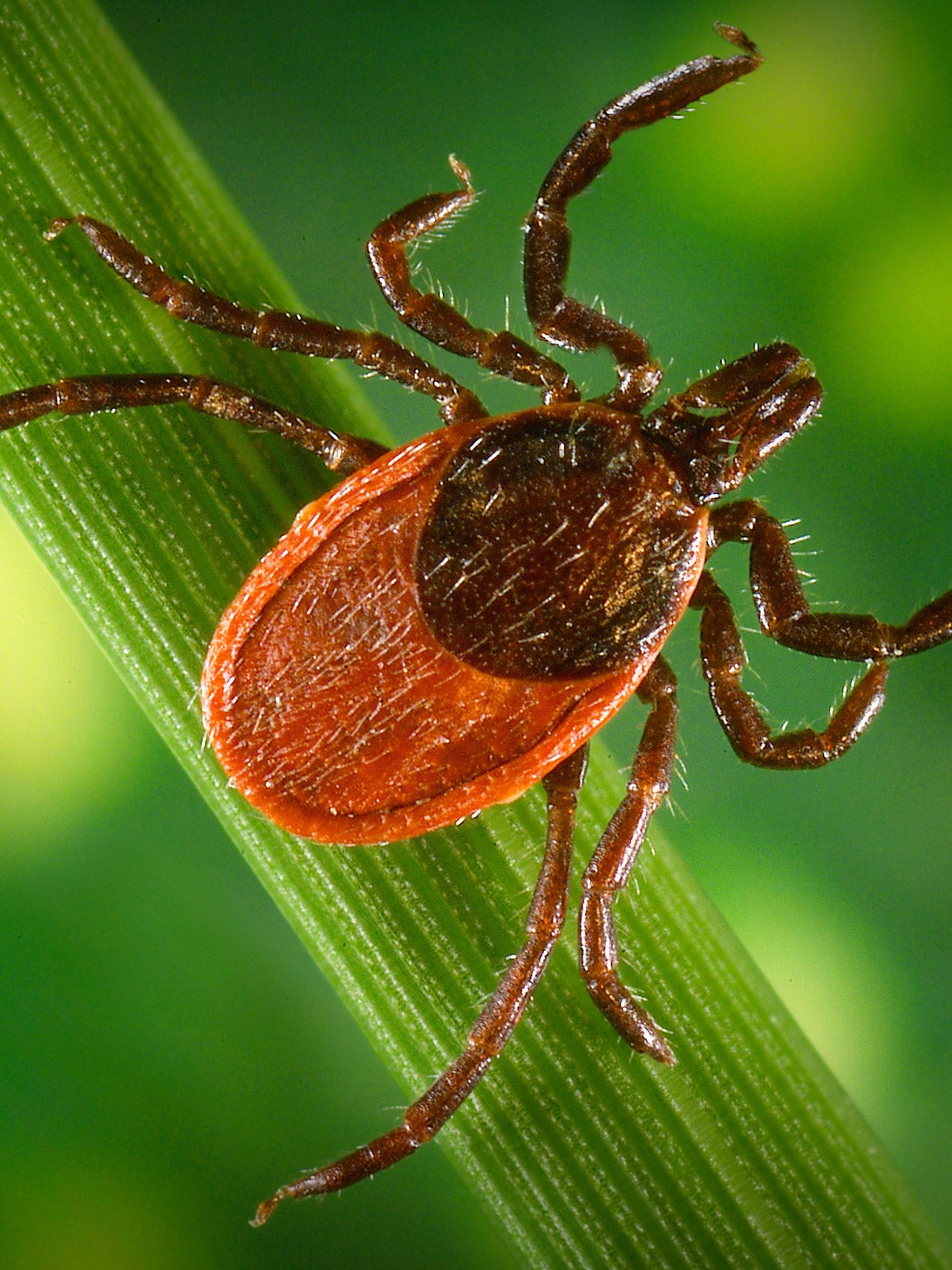
Opinion
We can’t let misinformation kill the new Lyme disease vaccine
Lyme disease is a public health threat that shouldn’t be. The Centers for Disease Control and Prevention estimates up to 476,000 Americans are treated for Lyme every year—a huge health care burden. We don’t have a vaccine against Lyme because misinformation drove one off the market in 2002. Now, I’m afraid misinformation threatens to sabotage a new Lyme vaccine, just when climate change is creating conditions for an explosion in the tick populations that carry the disease.
Sign up for Harvard Public Health
Delivered to your inbox weekly.
Lyme disease isn’t usually fatal, but it isn’t curable either, and its effects can be serious. I would know. I have personally experienced Lyme—it made everything I ate taste like blood and made me so achy and tired I could barely get out of bed. Although I couldn’t see it, I’d developed a softball-sized bullseye rash on my back, a well-known symptom of Lyme. Fortunately, I made a full recovery after a few days in the hospital.
If I were a dog, I probably could have avoided the whole thing. There’s been a canine Lyme vaccine available since 1990. The human vaccine, however, got pulled from the market in large part because of a fraudulent research paper that stoked public vaccine skepticism.
The first Lyme disease vaccine, LYMErix, was approved by the Food and Drug Administration in 1998, after clinical trials deemed it safe and found it over 75 percent effective at preventing Lyme disease.
But LYMErix became available just as debates about vaccine safety took off in the U.S. In 1996, Andrew Wakefield, a medical doctor who has since lost his license to practice medicine, published a study falsely linking the vaccine for measles, mumps, and rubella to childhood autism. Although the piece was retracted twelve years later and has been widely debunked, my research shows it generated a public backlash that never went away. Concerns that childhood vaccines can cause autism persist to this day.
Wakefield’s study created the perfect storm that led to LYMErix’s demise. Shortly after the vaccine’s debut, a study found that LYMErix could contribute to the development of arthritis in hamsters. There were then 60 unverified reports of similar symptoms showing up in humans, out of the 1.4 million vaccines administered. Bad publicity, a class action lawsuit, and low demand for the vaccine led to its discontinuation in 2002.
Since then, Lyme disease has grown into an even bigger public health threat in the U.S.
Given the threat, developing and distributing new vaccines for Lyme disease should be an urgent public health priority. Fortunately, a new vaccine candidate, from Pfizer and the French biotechnology company Valneva, could be on the market within a few years. In 2020, the companies announced positive results from a phase two clinical trial. That’s great news, but as a scholar who studies vaccine hesitancy, I’m nervous. My research suggests new Lyme disease vaccines are very much at risk of meeting the same fate as LYMErix.
In a forthcoming study in Public Opinion Quarterly, my colleagues and I show that Americans’ negative views toward the COVID-19 vaccine have spilled over to shape attitudes toward many other vaccines, including potential Lyme vaccines.
If we, as scholars, public health professionals, and vaccine advocates, want to make sure that new Lyme vaccines do not meet the same fate as LYMErix, now is the time to systematically study how we get people to trust vaccines again. My colleagues and I believe that the most effective way to do this is to meet vaccine skeptics where they are when crafting vaccine promotion campaigns.
Here’s how to break through barriers surrounding vaccine hesitancy:
- Conduct opinion surveillance. Public health researchers must routinely monitor public opinion to determine the prevalence and causes of vaccine hesitancy among the U.S. public.
- Target the messaging. Surveys can reveal reasons for vaccine hesitancy that state and federal agencies can then use to create different types of promotional campaigns. For instance, partisan disagreements about vaccinations can be bridged by providing examples of prominent politicians from one’s own side of the political aisle who encourage vaccination. These sample campaigns can be tested in randomized controlled trials, and the ones that work best can be used.
- Revise based on results. After launching a campaign, pay close attention to the results. Even failed efforts can inform the development of new campaigns aimed at promoting vaccine uptake.
We know there are myriad social, political, and psychological factors that underlie vaccine hesitancy. Our best efforts may still only incrementally move the needle in favor of vaccine uptake. Still, every step toward combating the spread of infectious disease is worth taking.
It’s not too late to do the research needed to improve public trust in a future Lyme vaccine—and in all vaccines—but those efforts need to begin now. It’s important that government and private and academic entities make a serious effort to begin funding strategic, evidence-driven work to combat misinformation and any emerging Lyme disease vaccine hesitancy.
Image: James Gathany / Public Health Image Library


